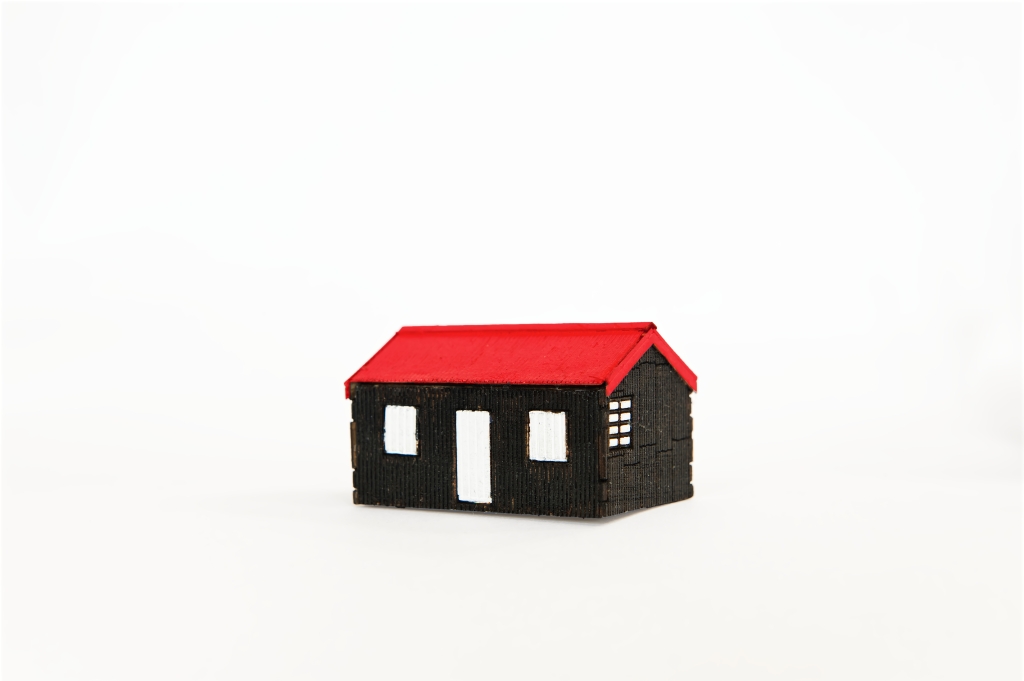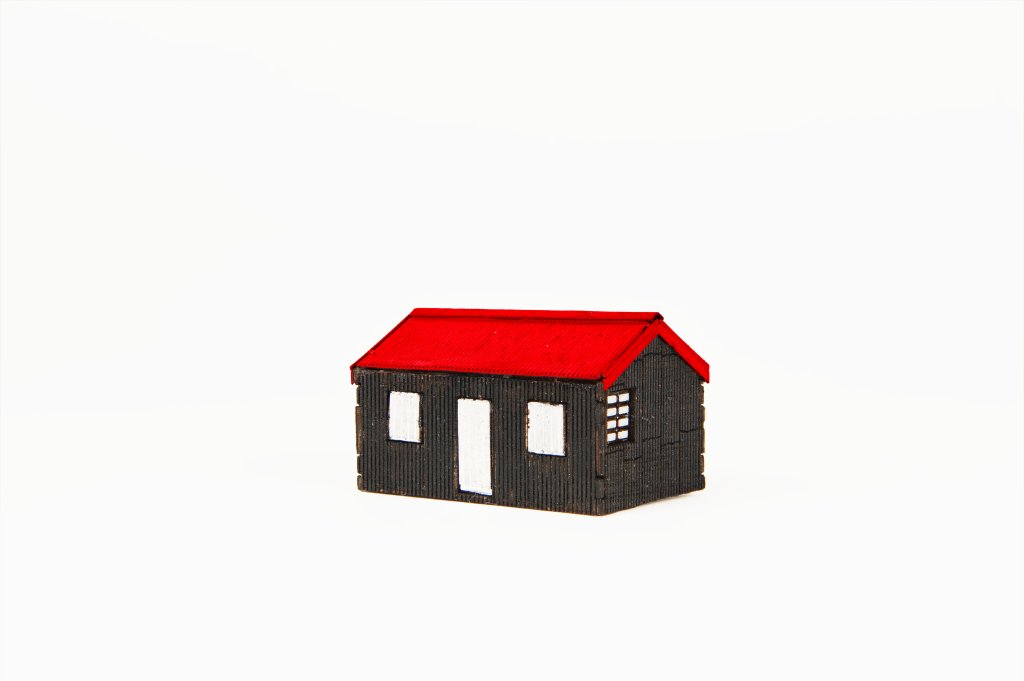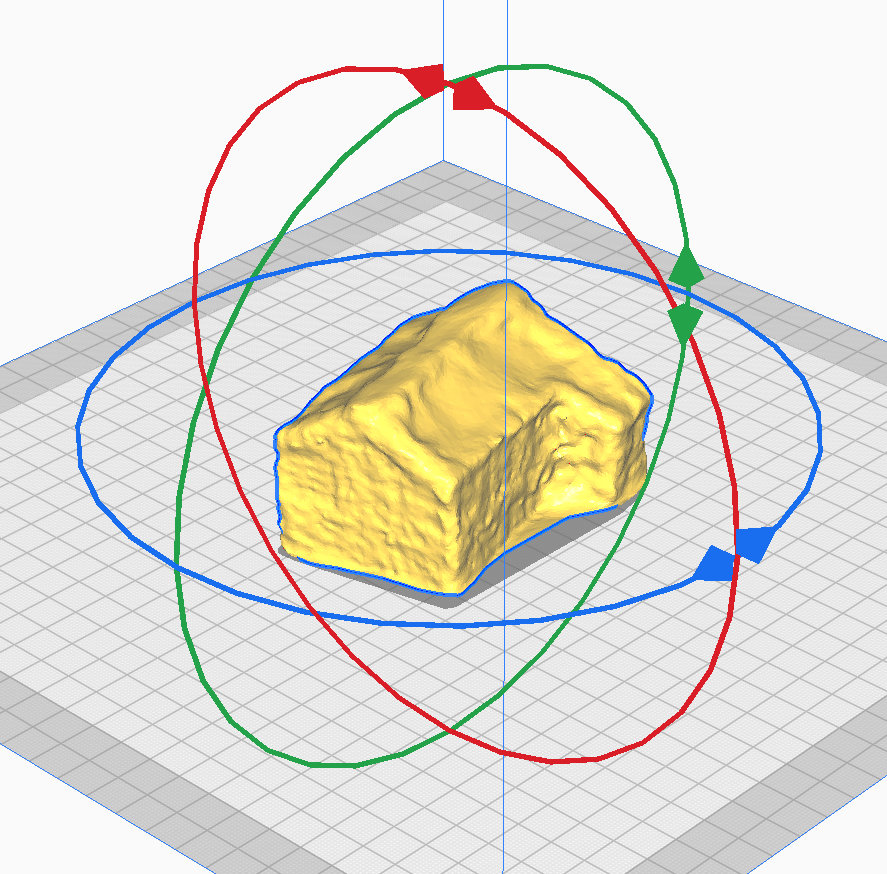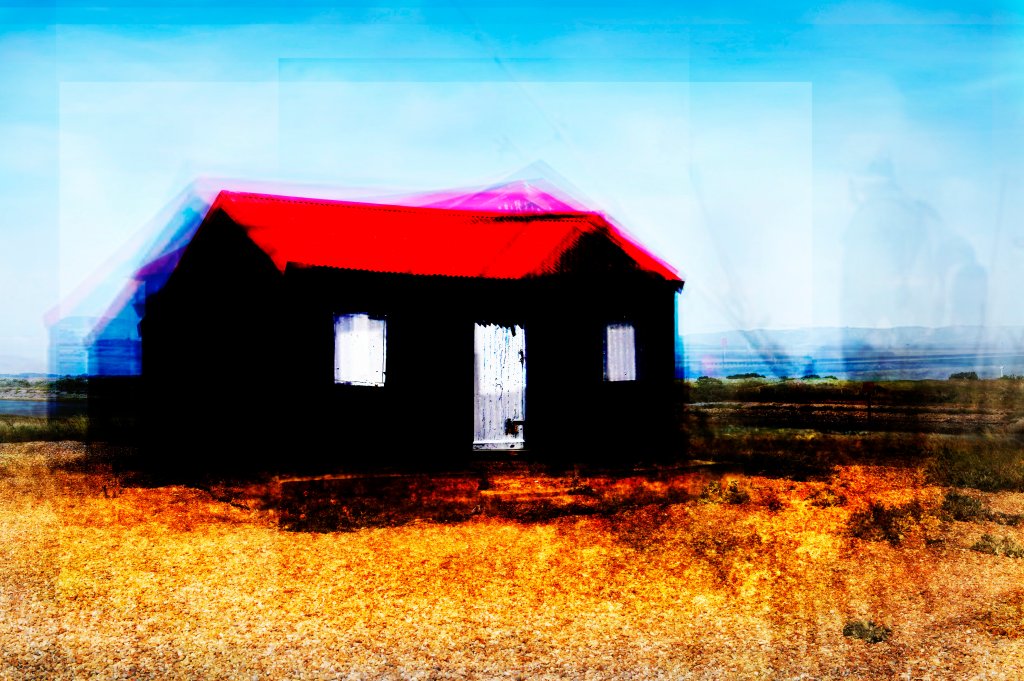MODELS
I finished the model of the Red Hut – it is very small (shorter in length than my little finger)! I have started to photograph it – below a first attempt at processing, I have several angles to work on. Some initial comments:
- I needed to adjust the colour of the red roof – there are various techniques to match colours in Affinity Photo and I need to find a simple but accurate version that I can re-use for different images/angles
- Note that when photographed from very close, as dictated by its size, depth of field is quite narrow. This is not necessarily an issue for a single “portrait” of the object, but makes it look very different from the original hut shot within its landscape, since the distance away renders all aspects of that real hut sharp. This is a good opportunity to experiment with focus merging…?

Continuing with this idea, below is a focus merge and also a video of a focus merge in action (before post-processing of the compound image), which I found interesting as it shows how the image is constructed (drawn if you will) and then coloured by the algorithm. I also experimented with a different way of adjusting the red colour of the hut roof…

SCANS
Light Detection and Ranging scanners are available on recent iPhones – I first became aware of this technique in a talk by Nick Knight (see https://photo515050level3.wordpress.com/2022/06/07/photo-london-2022/), and more recently in articles about the illicit scan of the Elgin Marbles at the British Museum (Sanderson, 2022), which led to them being 3D copied and further debate as to where the originals should be held.
For my purposes this technique could extend the discussion of real vs simulacra, analogue vs digital, natural vs constructed at Rye Harbour. Given the dual meaning of the word analogue (which can also be used in the sense analogous: comparable in certain respects, typically in a way which makes clearer the nature of the things compared) a possible title DNA: Digital Natural Analogue emerges…
Many 3D apps are emerging for iPhone – I decided to try Polycam as it was generally well-rated in all the reviews and noted as ideal for those making 3D prints – one thing I hope to do is scan the Red Hut at Rye Harbour and then print a model of it – moving between digital and physical, simulacra and reality. Polycam (with a paid subscription) allows you to model in many different formats, and to download videos of your model (useful for example for this blog post and presentation of the work) and .stl files for loading into a slicer such as Cura for 3D printing.
Further research suggested the LIDAR scanner is more appropriate for mapping spaces such as rooms – there is an intriguing potential here to map the Rye Harbour Nature Reserve – however this would be a big job and there would be issues of access to the interior which is fenced off to protect the wildlife.
For scanning objects photographs are actually the recommended route. I tried this first with the polycam app on my phone – the issue here is that the app controls the camera, allowing only 2 zoom modes and no exposure adjustment. This proved to be an issue for a small object with a high dynamic range (black and white surfaces) isolated on a white background. Shadow details were lost leading to a very lumpy model.
My next attempt was to use my DSLR (finally back from repair!) to take closer and better focused image with exposure compensation to render the white background at the top of the dynamic range and therefore retain details in the bottom of the range. I also used a base for the model, set on a tripod so that I could rotate it as I shot it. I took 132 photographs from different angles and batch processed them in Affinity to crop out the tripod and maximise the detail. I learnt that Affinity does not batch process RAW files efficiently so I shot in JPEG for this project. This resulted in a much better model – I cropped out the tripod in the Polycam editor but this has extremely basic functionality and when 3D printing the model can be straightened slightly and dragged through the virtual floor of the slicer to delete the base. Also note that a tiny fragment of blutack (that I used to attach the model temporarily to the base) is showing on one side and this would need to be dealt with before any formal presentation of this work.
The discrepancy is even wider when the surface models (.stl files for 3D printing) are viewed in Cura:


The next step might be to try and produce a model of the actual hut after photographing it in situ. Also after further researching The Map and the Territory (see https://photo515050level3.wordpress.com/2023/01/07/the-map-and-the-territory/) it could be possible to LIDOR scan just tiny segments of the reserve and lays those out as 3D prints on the surface and rephotograph those. Or photograph and scan pebbles and place those on the beach and record what happens to them (issues with permission and perhaps litter here although they would be biodegradable a PLA).
COMBINING FOUND PHOTOGRAPHS
This was an attempt to use layered images of the Red Hut to create a composite – every view of the hut, if you like, similar to my test image in my garden of the isolation hut. I found this more difficult to do, mostly because I have less to play with – the ground and sky are mostly the same with view details (particularly the sky) and so tend to build up in colour intensity. The hut itself shows some interesting features – again the colour builds so the roof becomes very red, with all the alternative roof angles providing nuance round the edges. The black of the walls and the white of the shutters and doors also became very intense and contrasty. The different framing (obviously chosen by a variety of people) was challenging and tended to leave a shadow frame in the image – this could have been interesting, suggesting construction of the image, but here I don’t think really works. An experiment that I will park for now –

LIST OF ILLUSTRATIONS USED
- https://purdiegallery.co.uk/products/copy-of-big-wave-at-hastings-1
- https://www.ryenews.org.uk/culture/red-hut-tidied-up
- https://www.tripadvisor.co.uk/LocationPhotoDirectLink-g186276-d2043206-i283523499-Rye_Harbour_Nature_Reserve-Rye_East_Sussex_England.html
- http://compellingphotography.co.uk/2014/09/red-roofed-hut-rye-harbour/
- https://www.flickr.com/photos/65983156@N03/8721313874
- https://www.ryeharbour.net/picture/number280.asp
- https://www.poferries.com/en/inspire-me/destinations/great-britain/things-to-do-in-rye
- https://www.rhnrfriends.co.uk/photo_14623839.html
- https://www.flickr.com/photos/ayjayarr/3339542784/
- https://clarehocterphotography.org/tag/red-hut-rye-harbour/
- https://www.flickr.com/photos/99827232@N08/10560284316/
- https://www.aboutbritain.com/towns/rye-harbour.asp
BIBLIOGRAPHY
- https://poly.cam
- Sanderson, D. (2022) Perfect replica of Elgin Marbles unveiled — and it was carved by robots. At: https://www.thetimes.co.uk/article/elgin-marbles-perfect-replica-unveiled-with-british-museum-in-talks-bmxvfjvq7 (Accessed 20.12.2022)